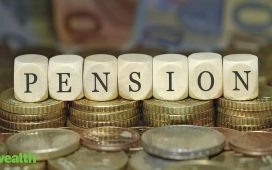Unlock the Editor’s Digest for free
Roula Khalaf, Editor of the FT, selects her favourite stories in this weekly newsletter.
Chancellor Jeremy Hunt’s national insurance cuts will reduce the impact of the government’s multibillion-pound stealth tax increase by just under a quarter, according to the independent Office for Budget Responsibility.
In a statement released on Wednesday, the fiscal watchdog projected the Treasury will raise an extra £44.6bn in annual tax revenues by 2028-29 because the government has frozen tax thresholds.
Freezing thresholds, rather than raising them in line with inflation, increases tax receipts as rising wages tip ever greater numbers of workers into the tax system or on to higher rates, a phenomenon known as “fiscal drag”.
Chris Etherington, partner at RSM, an accountancy firm, said the chancellor’s national insurance changes “could be described as a tax cut that isn’t one”.
He said this was because Hunt had opted to keep thresholds and allowances frozen and as a result “a lot more people are going to be dragged into paying tax and paying tax at higher rates”.
The OBR said that the cuts in national insurance would lower tax receipts by up to £10bn by 2028-29.
The OBR said: “This measure offsets just under a quarter of the post-pandemic personal tax rises that were announced between March 2021 and November 2022, which we now estimate will raise a combined £44.6bn in 2028-299.”
The government froze the personal allowance and other tax thresholds in March 2021 when Prime Minister Rishi Sunak was chancellor.
The initial freeze was intended to run from April 2022 to April 2026 but was extended to 2028 in last year’s Autumn Statement. No changes to thresholds were announced on Wednesday.
The freezing of the personal allowance at £12,570, the point at which people start to pay income tax, means nearly 4mn more people will be expected to pay income tax between 2022-23 and 2028-29, according to the OBR.
The OBR estimated a further 3mn taxpayers will move into the higher rate band that kicks in at £50,271, while 400,000 more people will be pulled into the top “additional” rate on income over £125,140.
“While personal and business tax cuts reduce the tax burden by half a percentage point, it still rises in each of the next five years to a postwar high of 38 per cent of GDP,” the OBR added.
In his Autumn Statement, Hunt announced a reduction in the main rate of national insurance paid by employees on earnings of between £12,570 and £50,270. This will fall by 2 percentage points from 12 per cent to 10 per cent and will benefit 27mn people. He said the tax cut would come into effect in January, rather than the usual practice of introducing changes in the new tax year that begins in April.
Hunt also made changes to national insurance paid by the self-employed. This included a 1 percentage point drop on class 4 national insurance contributions (NICs), which is currently paid at 9 per cent on profits between £12,570 and £50,270.
From April 2024, this will fall to 8 per cent, which Hunt said would be worth an average of £350 for a self-employed person earning £28,200 a year.
He also pledged to abolish class 2 national insurance contributions from April 2024. Class 2 NICs are paid by the self-employed at a flat rate of £3.45 a week. The move will benefit about 2mn people.
Hunt said the measures were designed “to make work pay better”. He cited the OBR’s projections that the changes to national insurance would raise employment by 28,000 and raise the number of hours in full time employment worked by 94,000.
Richard Maitland, partner at MHA, said: “The reductions in NI rates are broadly welcome. They will put more money in the pockets of employees and the self-employed. However, this is only returning to individuals some of the extra tax they have had to pay due to fiscal drag.”
Sian Steele, head of tax at Evelyn Partners, said Hunt had favoured cutting national insurance over income tax partly because it was a tax that only workers pay, while income tax applies to several other sources of income.
“An NI cut can be presented as an incentive and a reward to workers, while also having the benefit of being cheaper for the Treasury,” she added.











